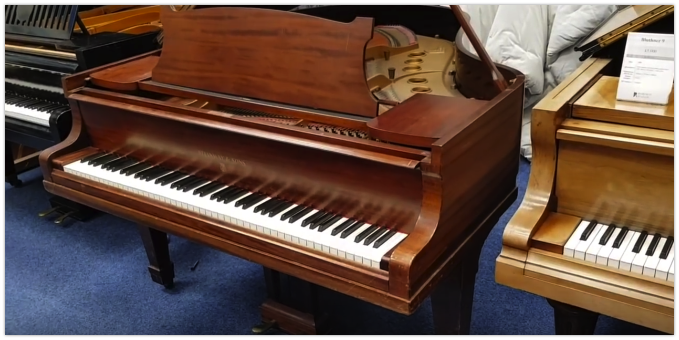
A Steinway model M, 5’7″ long made in 1960. We will see what work is needed to it.
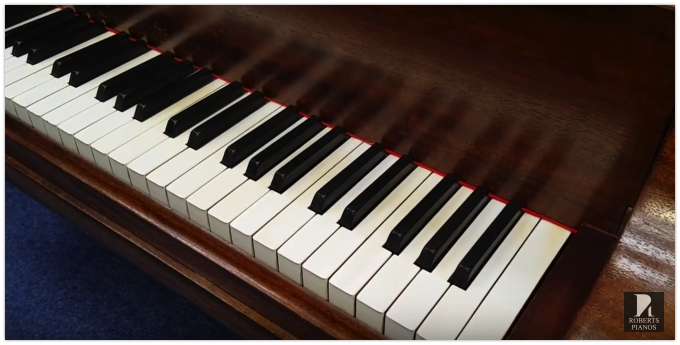
First of all it has a pretty perfect set of ivory keys they are a bit yellow but we can buff them and that will take most of the yellow out. There is a couple of very small chips on the front that we can easily disguise I think.
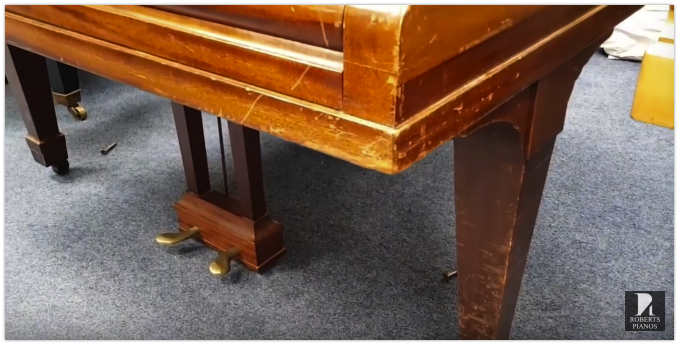
The piano is mahogany. It as been in an institution. As you can see it has not been incredibly well looked after.
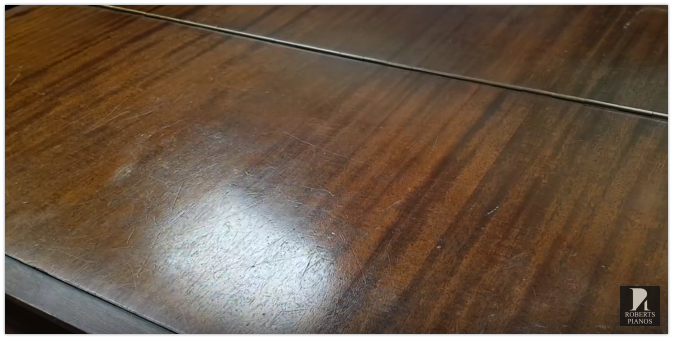
It could be French polished and I think it will be a very successful job. But when a piano is like this and particularly this age of piano. If it was older and figured rosewood or walnut. Then we would re-polish it and leave it that colour. But there is a shortage of black grand pianos. So it is extremely likely that it will be redone in black.
So if you are watching this video and you would luke this piano to be redone in mahogany then please let us know. We are almost definitely going to fully restore this piano.
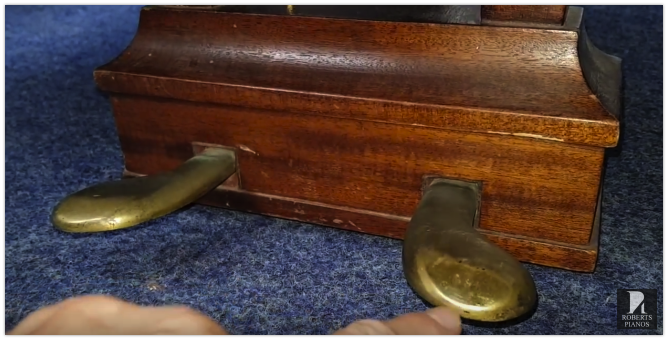
It has had a reasonable amount of wear over the years. The pedal has almost completely worn away. The piano at this age was one of the main forms of entertainment. And you get a huge amount of wear of Steinways. But this pedal is still very rounded. That’s encouraging.
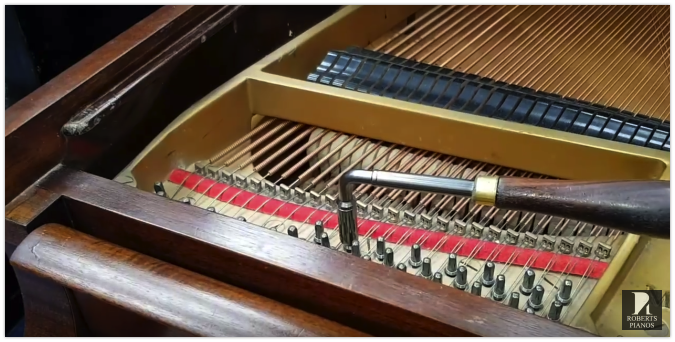
Making a decision whether to fully restore. I have mentioned this on other videos before. I test the tuning pins to see whether they are tight. And these tuning pins are tight enough just about. But they are not tight enough to be tight. They have been replaced obviously, it’s been restrung.
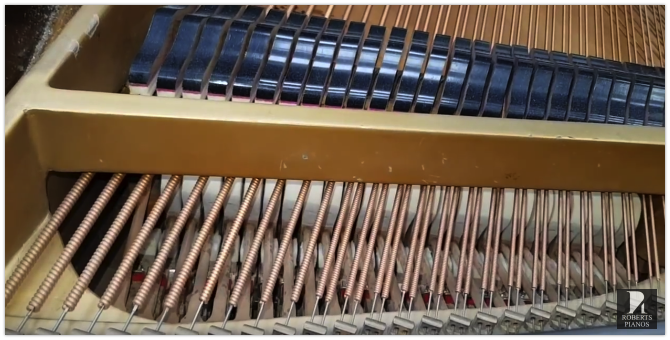
It’s quite inferior really for the model of piano. It might be the quality of the strings, and potentially the bridge needs recaping. These things we will find out as we go along.
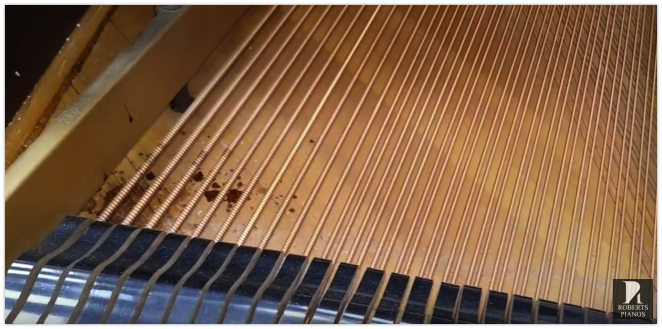
The soundboard is very dirty there. As you often get with spillages.
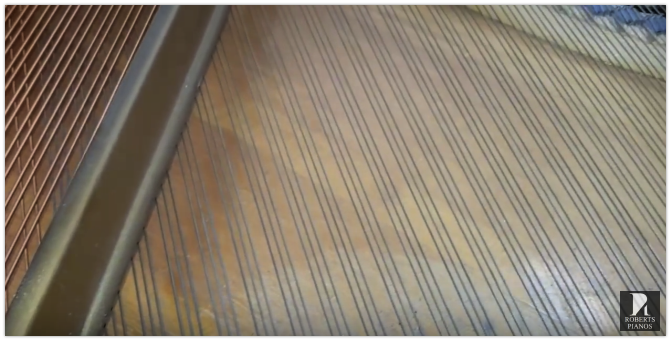
The soundboard itself does not have any cracks on it that I can see. but when we destring the piano you might see one or two cracks that open up.
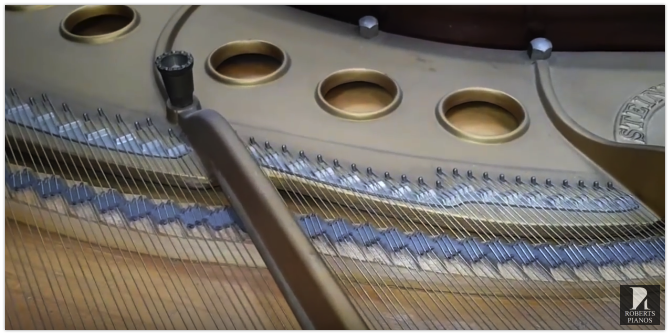
The frame is not too bad so there is potential to leave it as it is. Although we’ve already decided because of slightly loose tuning pins and bad bass strings.
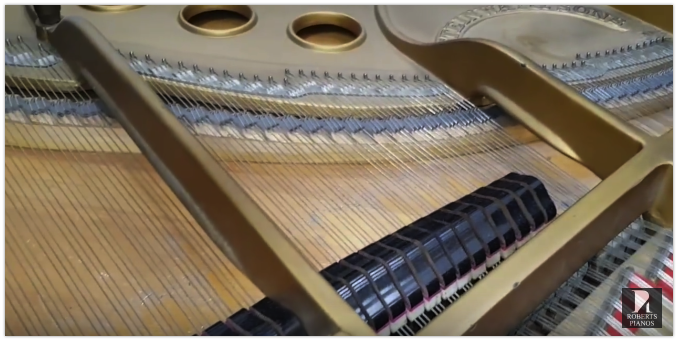
Let’s listen to the mid treble. That’s very thin and harsh. We’ll look at the hammers in a minute. Again I think, bridge recapping and better strings.
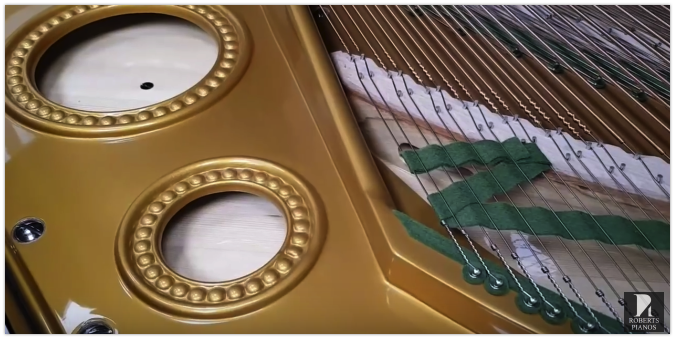
So obviously if it’s fully restored like this. This is a Bechstein so the colouring is a bit different to a Steinway. But like this, it will look like a new piano. If you have seen other videos you would have been looking at them [restored Steinways].
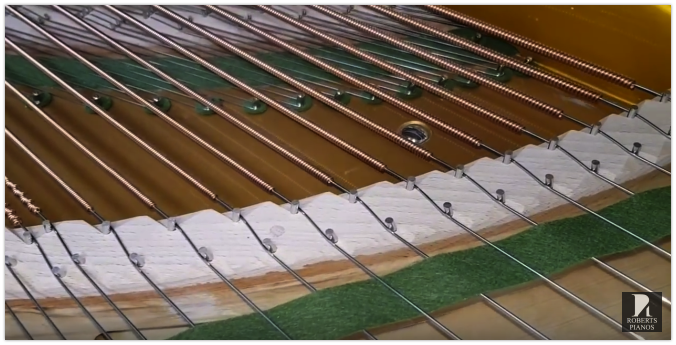
The bass strings are German, very acurately made
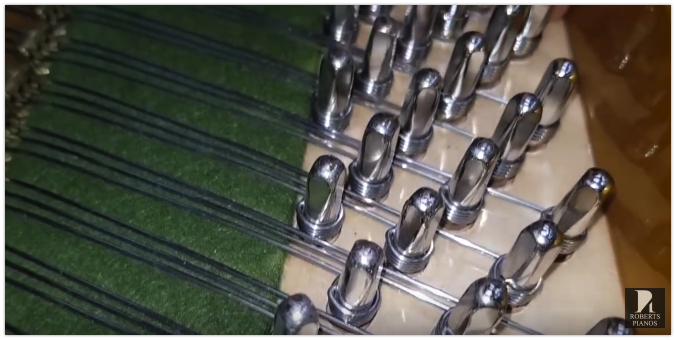
Full restoration will include a brand new tuning block, that’s the wood that the tuning pins go into. It’s important that smaller pins are put in. They will be really rock solid then. New tuning blocks are ideal for modern central heating. We have other videos that are more detailed about tuning blocks and other details.
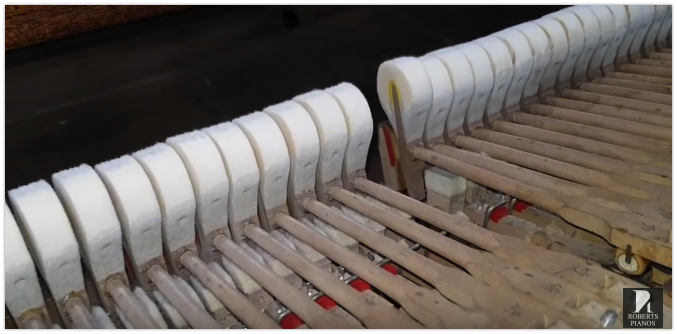
So looking at the action, you can see the hammers have been replaced. I don’t think the rollers have been replaced, I would have thought they were original.

We will replace hammer, shanks and rollers. As I mentioned before. As that is the best way of getting the right sound. A new hammer. And also making sure all the hinges are tight and the friction is correct.
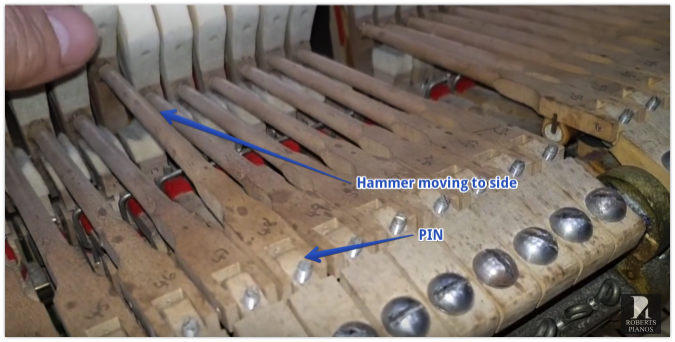
There are some loose hinges here. You might not be able to see it but as I move the hammer side to side you can see my finger moving that’s because the pin here is not tight.
It has been played and played. You could re-condition these hammers, but I am not convinced they will sound as good as they could afterwards. So it’s a full case of restoration.
Not because it’s not been restored before. But because we really want to get the best out of the piano. It’s worth it. A model M Steinway from the 1930’s. One of the best small grand pianos ever made.
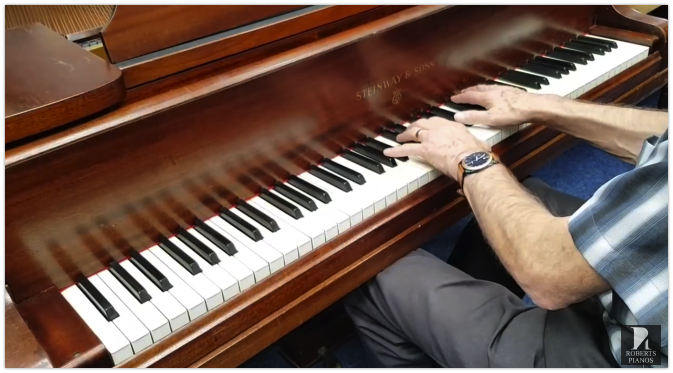
So that’s an assesment of a Steinway model M, made in 1930. 5’7″ long. Just come into stock. And having assesed it. It is definitely a candidate for full resotration. The action feels like a disastorous at the moment. The upweight pushes against your fingers.
There are some good things about it, the keytops are almost perfect and can certainly be made to look perfect. But we are going to have to restore it. New restplank, refinish the soundboard, frame and so on. As you have seen on many other videos. It is not far out of being in tune actually. But round here it sounds very thin and needs a downbearing increase. And the strings in the bass are very poor indeed. So it will certainly be a wonderfull candidate for restoration. We have done many of these. I will put the video on once restored.
If you want this piano in mahogany please let us know. Becuase we will almost certainly redo it in black unless otherwise informed. Unfortunately the majority of peope are looking for a piano in black.
As I say if it was a very special Rosewood veneer or Walnut we would possibly keep it
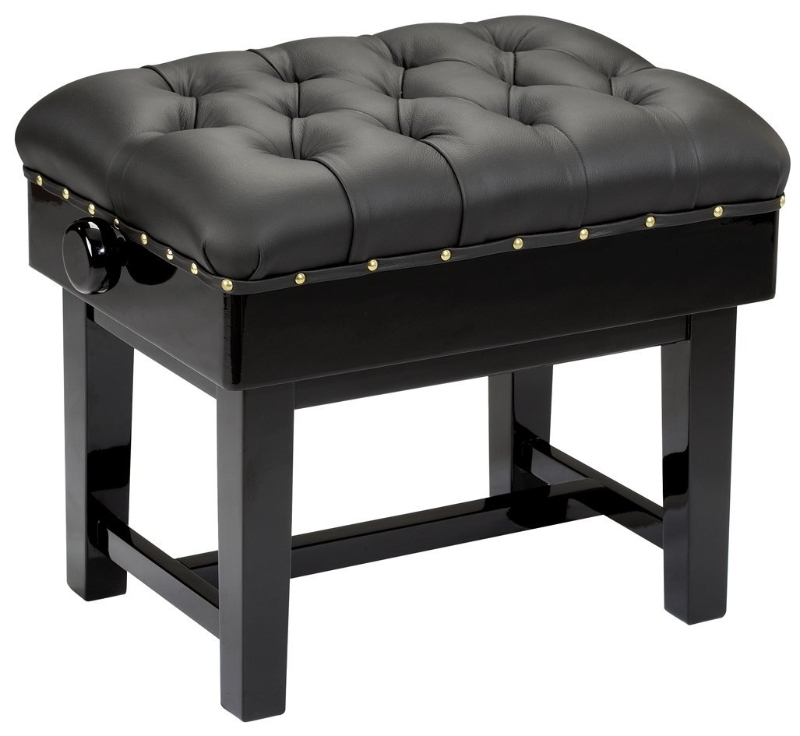 Hidrau London Concert Stool
Stool piano
Year: New
Price: Price :- £700
Hidrau London Concert Stool
Stool piano
Year: New
Price: Price :- £700Location: Oxford Workshop More details
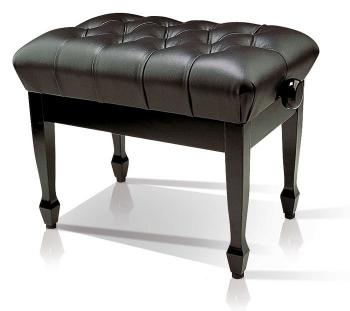 Hidrau Berlin Stool
Stool piano
Year: New
Price: Price :- £610
Hidrau Berlin Stool
Stool piano
Year: New
Price: Price :- £610Location: Oxford Workshop More details
 Hidrau Geneva Stool
Stool piano
Year: New
Price: Price :- £430
Hidrau Geneva Stool
Stool piano
Year: New
Price: Price :- £430Location: Oxford Workshop More details
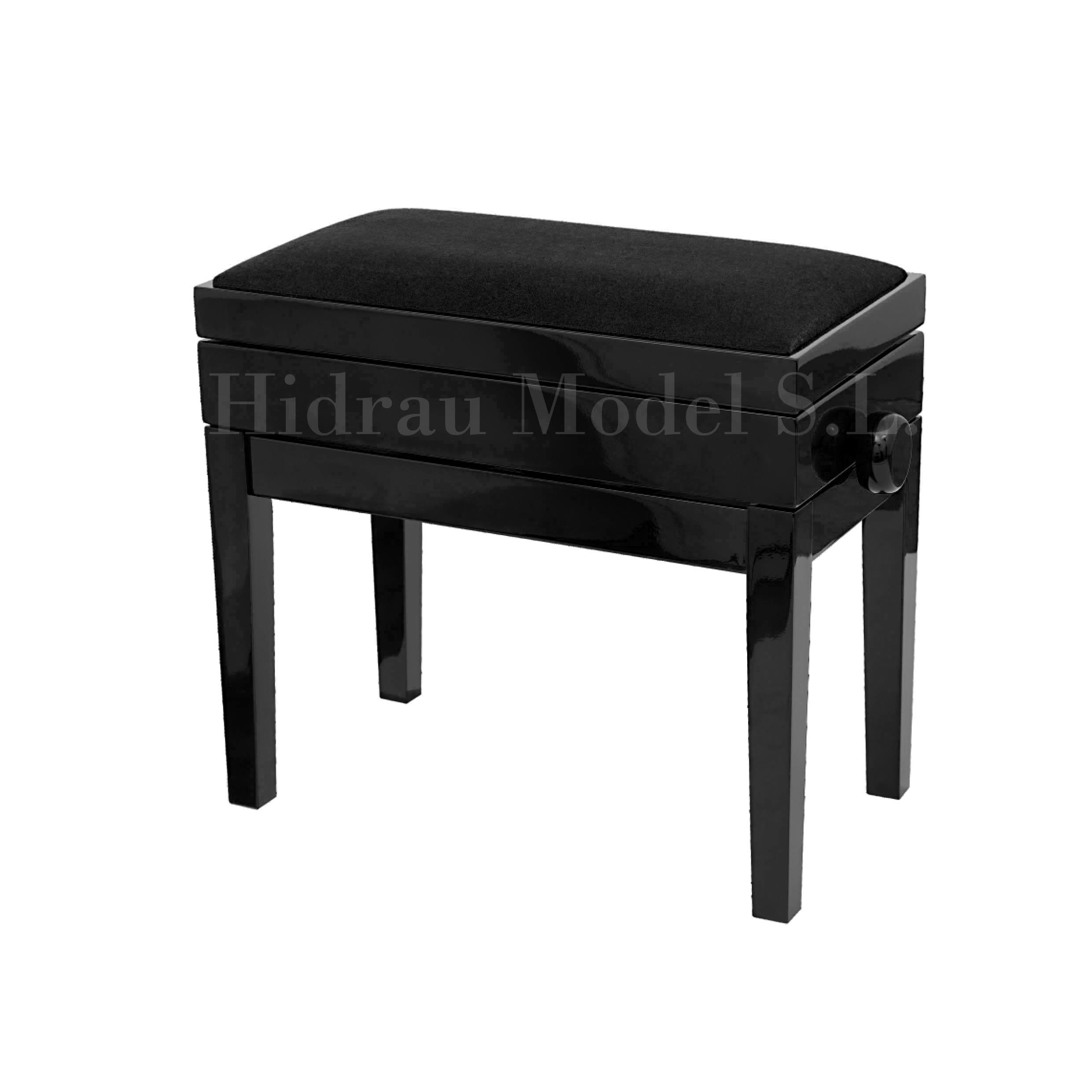 Hidrau Cambridge Stool
Stool piano
Year: New
Price: Price :- £340
Hidrau Cambridge Stool
Stool piano
Year: New
Price: Price :- £340Location: Oxford Workshop More details
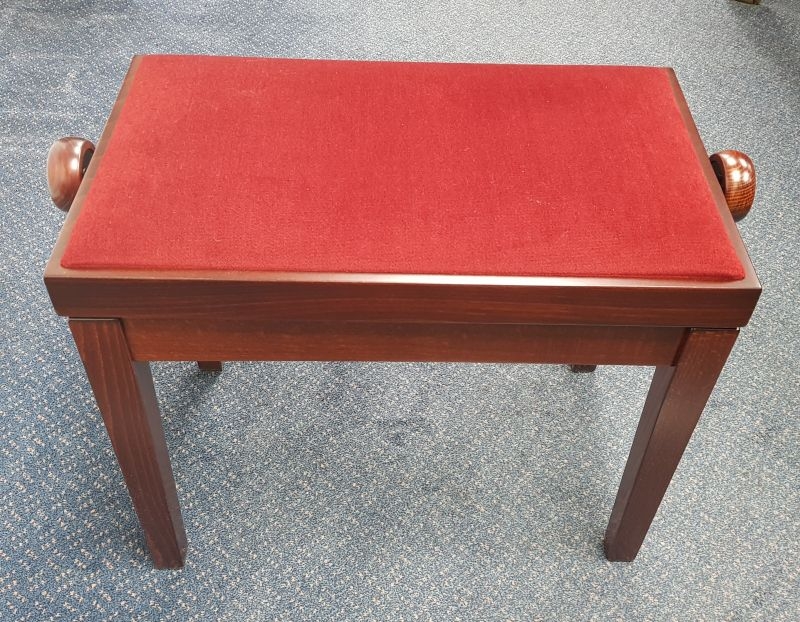 Hidrau Toledo Stool
Stool piano
Year: New
Price: Price :- £150
Hidrau Toledo Stool
Stool piano
Year: New
Price: Price :- £150Location: Oxford Workshop More details
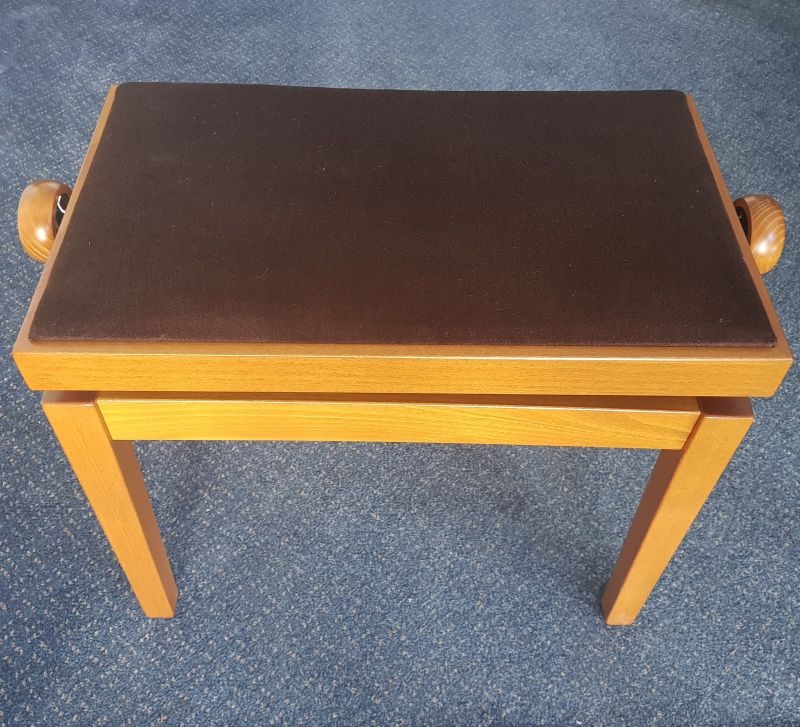 Hidrau Toledo Stool
Stool piano
Year: New
Price: Price :- £150
Hidrau Toledo Stool
Stool piano
Year: New
Price: Price :- £150Location: Oxford Workshop More details
 Hidrau Toledo Stool
Stool piano
Year: New
Price: Price :- £149
Hidrau Toledo Stool
Stool piano
Year: New
Price: Price :- £149Location: Oxford Workshop More details
It is very hard to control at the moment, it is all there. It is going to be an excelent piano when it is finished. Thank you very much for listening!

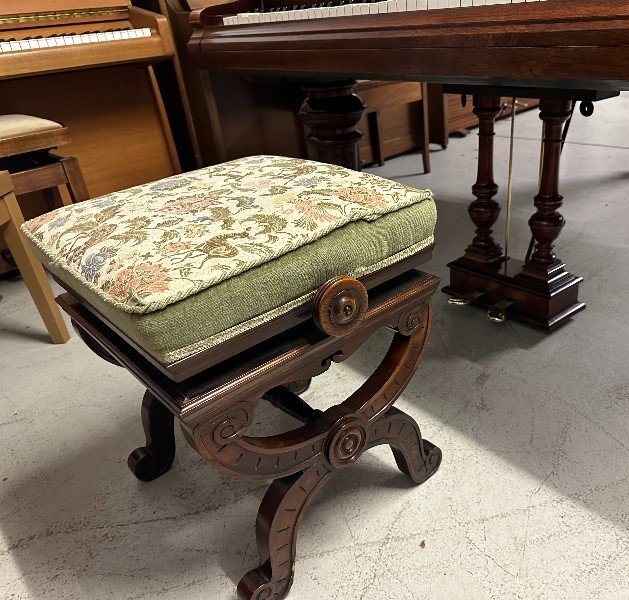 Piano
Piano
 Katz Klip
Katz Klip
